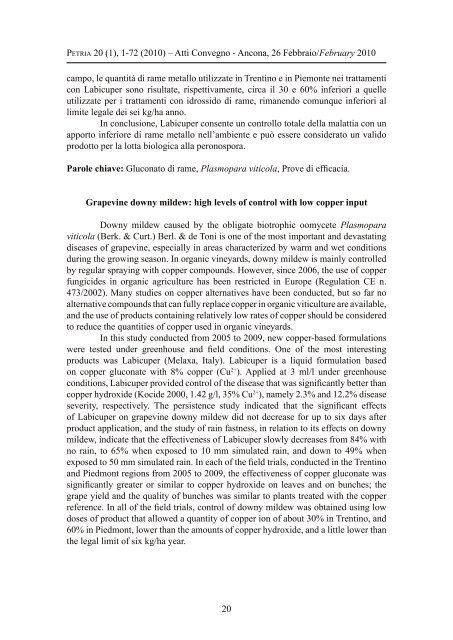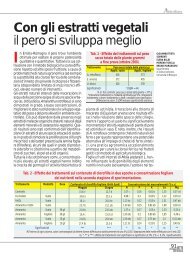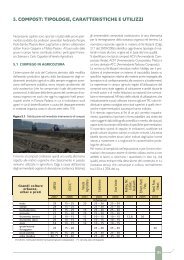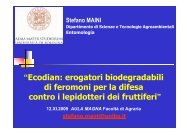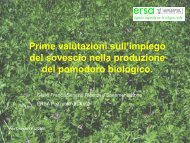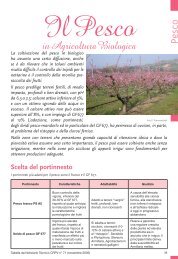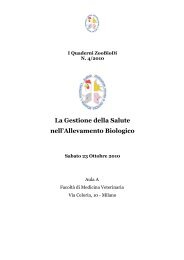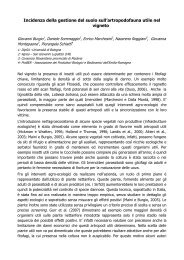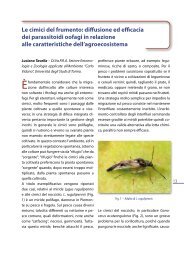Create successful ePaper yourself
Turn your PDF publications into a flip-book with our unique Google optimized e-Paper software.
Petria 20 (1), 1-72 (2010) – Atti Convegno - Ancona, 26 Febbraio/February 2010campo, le quantità di rame metallo utilizzate in Trentino e in Piemonte nei trattamenticon Labicuper sono risultate, rispettivamente, circa il 30 e 60% inferiori a quelleutilizzate per i trattamenti con idrossido di rame, rimanendo comunque inferiori allimite legale dei sei kg/ha anno.In conclusione, Labicuper consente un controllo totale della malattia con unapporto inferiore di rame metallo nell’ambiente e può essere considerato un validoprodotto per la lotta biologica alla peronospora.Parole chiave: Gluconato di rame, Plasmopara viticola, Prove di efficacia.Grapevine downy mildew: high levels of control with low copper inputDowny mildew caused by the obligate biotrophic oomycete Plasmoparaviticola (Berk. & Curt.) Berl. & de Toni is one of the most important and devastatingdiseases of grapevine, especially in areas characterized by warm and wet conditionsduring the growing season. In organic vineyards, downy mildew is mainly controlledby regular spraying with copper compounds. However, since 2006, the use of copperfungicides in organic agriculture has been restricted in Europe (Regulation CE n.473/2002). Many studies on copper alternatives have been conducted, but so far noalternative compounds that can fully replace copper in organic viticulture are available,and the use of products containing relatively low rates of copper should be consideredto reduce the quantities of copper used in organic vineyards.In this study conducted from 2005 to 2009, new copper-based formulationswere tested under greenhouse and field conditions. One of the most interestingproducts was Labicuper (Melaxa, Italy). Labicuper is a liquid formulation basedon copper gluconate with 8% copper (Cu 2+ ). Applied at 3 ml/l under greenhouseconditions, Labicuper provided control of the disease that was significantly better thancopper hydroxide (Kocide 2000, 1.42 g/l, 35% Cu 2+ ), namely 2.3% and 12.2% diseaseseverity, respectively. The persistence study indicated that the significant effectsof Labicuper on grapevine downy mildew did not decrease for up to six days afterproduct application, and the study of rain fastness, in relation to its effects on downymildew, indicate that the effectiveness of Labicuper slowly decreases from 84% withno rain, to 65% when exposed to 10 mm simulated rain, and down to 49% whenexposed to 50 mm simulated rain. In each of the field trials, conducted in the Trentinoand Piedmont regions from 2005 to 2009, the effectiveness of copper gluconate wassignificantly greater or similar to copper hydroxide on leaves and on bunches; thegrape yield and the quality of bunches was similar to plants treated with the copperreference. In all of the field trials, control of downy mildew was obtained using lowdoses of product that allowed a quantity of copper ion of about 30% in Trentino, and60% in Piedmont, lower than the amounts of copper hydroxide, and a little lower thanthe legal limit of six kg/ha year.20


